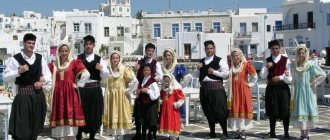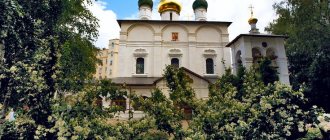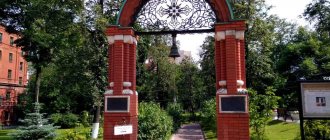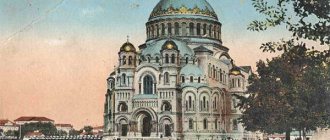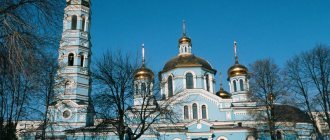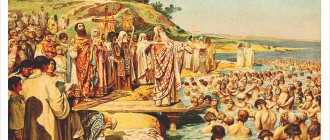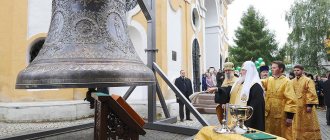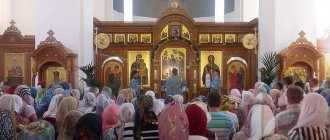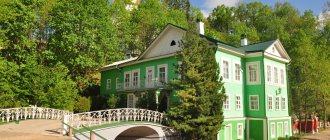The religions of Georgia, like the peoples living here themselves, are diverse. Despite the fact that representatives of different faiths, living in the same territory, honor different traditions and consider themselves to be ethnically different cultures, they have nevertheless learned to coexist in peace and harmony with each other.
Georgian Orthodox Church
The relatively small Caucasus region has been home to many peoples from time immemorial. It is now difficult to determine the boundaries between their settlement zones and to clearly divide countries along religious lines. For example, many people are interested in what kind of faith Georgians have.
Most Georgians profess Orthodoxy. With a population of 3,723,000 people, about 85% consider themselves Orthodox (2014 census data). Islam is professed by 10% of the population, parishioners of the Armenian Apostolic Church make up approximately 3%.
Divine service in the temple of the Georgian Orthodox Church
History of religions
Most Georgians consider themselves Orthodox. However, few people know that this country became the second in the world where Christianity received the status of a state religion.
And although the Orthodox community in the country is the largest, one cannot help but note the presence on this land of representatives of other religions: Islam, Catholicism, Protestantism, Judaism and others. Their appearance on the territory of the country is due to numerous historical events that led to the appearance of bearers of different religions here.
History of the baptism of the Georgian people
The Georgian Orthodox Church is rightfully considered one of the oldest Christian Churches. In Orthodox tradition, the territory of modern Georgia is considered the inheritance of the Most Holy Theotokos. It was She who had the apostolic lot to go preach the Gospel in Georgia. According to tradition, the first episcopal see in these lands was founded by the Apostle Andrew the First-Called. He visited several Georgian cities, where he preached Christianity and baptized those who believed. Through the prayers of the apostle, many miracles and healings occurred. However, some pagans did not accept the One God, and after the departure of the Apostle Andrew, persecution began against the followers of Christianity. Many converts were tortured and killed.
At the beginning of the 4th century, a young Christian woman, Nina, came to Iberia from Jerusalem to preach, and was subsequently canonized as a saint among the Equal-to-the-Apostles. The Most Pure Virgin appeared to Nina in a dream. The Mother of God presented Nina with a cross made of grapevine and showed her the way to preach Christianity. The country where Equal-to-the-Apostles Nina went was Iveria (a territory in northern Georgia). In the city of Mtskheta, she set up a modest home for herself, preached Christ and healed the sick.
One day, Queen Nana, suffering from illness, was brought to Nina. Through the prayers of the saint, the queen received healing from her illness and after that became a Christian. King Mirian, who worshiped pagan gods, wanted to kill Nina. He considered preaching Christian doctrine impertinent. But the king suddenly became blind; no pagan rituals helped him regain his sight. Then Mirian promised to also accept Christianity in case of healing. The king began to pray to “the God of Nina” and immediately received his sight.
The Tsar sent a letter to the Roman Emperor Constantine and his mother Helen, in which he expressed a desire to be baptized. Bishop John, priest Jacob and a deacon were sent to Georgia. So the ruler of Georgia accepted Christianity and the Georgian people were baptized.
Religious composition of the population
There are about 40 religious organizations operating in the country. Let's talk in more detail about the main ones, including the Orthodox. Let's consider the history of their appearance on the territory of Georgia, the main features and shrines.
Orthodoxy
The Orthodox community of Georgia is represented by the Georgian Apostolic Autocephalous Church, which ranks 6th among Slavic local churches in terms of the number of adherents. More than 3 million Georgians belong to it. The head of the church is the Patriarch (Catholicos) - Archbishop of Mtskheta and Tbilisi Ilia II.
Story
The history of the adoption of Christianity in Georgia goes back to apostolic times. Then it fell by lot to the Mother of God herself to preach in Iberia. But Christ commanded her to send the Apostle Andrew the First-Called in her place and give him her miraculous image on the road. Which is what was done. Later, the apostles Matthew, Thaddeus, Bartholomew and Simon the Canonite also preached in Georgia.
King Farsman I, not being a Christian, began the first persecution of believers in the country. This led to some loss of faith. But after two and a half centuries, Saint Nina, who came at the behest of the Mother of God, converted first Queen Nana and then King Mirian to Christianity. Thanks to this, the baptism of Georgia and its deliverance from paganism took place.
In 609, the Georgian Church accepted the decree of the Council of Chalcedon on two natures in Christ, thereby separating from Monophysite Armenia. And in the 9th century, under King Vakhtang I, it received autocephaly from Antioch.
The Orthodox had to endure many trials, defending the faith of the Georgian people, first from the fire-worshippers of the Sassonians, and then during the Turkish conquests in the 16th-18th centuries from Muslim rulers.
There are several known cases when Georgian Christians professed their faith en masse and suffered martyrdom. For example, in the 17th century, residents of Tbilisi refused to comply with the order of the Persian Shah to walk on the cross of St. Nina, thrown on the bridge over the Kura River. As a result, 100 thousand people were executed by the Shah. This example of Orthodox Georgians defending the religion of their country is worthy of respect.
From 1811 to 1917 The Georgian Orthodox Church had the status of the Georgian Exarchate of the Russian Orthodox Church (Russian Orthodox Church), and on the eve of the Russian Revolution it was again declared autocephalous.
Until recently, the Orthodox Church of Georgia was legally endowed with privileges over other faiths, but since 2011, all religious organizations in the country have been given equal rights.
Shrines and temples of Georgia
Speaking about Orthodox Georgia, one cannot fail to mention the shrines kept here:
- The first and earliest shrine by date of appearance is Svetitskhovelli (life-giving pillar) - the temple of the 12 apostles in the city of Mtskheta. The building has existed in its original form since 1010. In addition to the Life-Giving Pillar itself and the Robe of the Lord, the temple contains several other Christian relics, the first of which is the cloak of the holy prophet Elijah. A particle of the relics of St. is also kept here. ap. Andrew, a cross with part of the Life-Giving Cross of the Lord and the baptistery in which King Mirian was baptized.
- Tsminda Sameba Cathedral is the Cathedral of the Holy Trinity in Tbilisi. Back in the 17th century, the Armenian embosser Bebut bought land here, built the Church of the Virgin Mary and built a cemetery around it. During the Soviet era, on the orders of Beria, this place was desecrated and destroyed. In 1989, the idea of restoring the temple arose. The collapse of the USSR and the war in Georgia in 1992 did not allow construction to begin immediately. It was possible to lay the first stone in the foundation of the temple only on November 23, 1995. Today Tsminda Sameba is one of the largest Orthodox churches in the world. Its height is more than a hundred meters, and its area is about 5,000 square meters; the building goes another 40 meters deep into the hill. There are 13 altars in the cathedral, several of them are located underground. On the territory of the complex there is a monastery, a bell tower, 9 chapels, a seminary, the residence of the patriarch, a hotel and a park. The scale and beauty of this grandiose structure is amazing. The floor and altar are covered with marble tiles with mosaic patterns, the walls are covered with frescoes. Some of the icons in the temple were painted by Catholicos Ilia II himself. The main shrines kept here are a huge handwritten Bible and the “Hope of Georgia” icon. The image, like the cathedral itself, is huge. Its size is three meters in height and the same in width. In the center is the Mother of God, surrounded by almost four hundred Georgian saints.
- Jvari Monastery is another significant building in the country. According to legend, it was at this place that Saint Nina erected a huge cross in honor of Iberia’s acquisition of Christianity, which today is the main shrine of Jvari.
- Nunnery in Bodbe. The monastery is famous for the fact that Saint Nina, Equal to the Apostles, lived and was buried here. Later, a temple was erected over her grave, around which the monastery grew. And the relics of his patron saint rest right there under a bushel, as the saint wanted. Nina.
- Another Orthodox shrine of Georgia is the cross of St. Nina, which was given to her by the Mother of God with her blessing for her apostolic feat.
Islam
Islam first appeared on the territory of the country in 645 with the invasion of the Arabs. But a small number of Georgians accept Islam. Later, the current power of the emirate weakens, and Islam declines. In the 15th century, western Georgia became part of the Ottoman Empire, and the eastern part of the country at that time was under Persian rule. There is an active Islamization of the population, which ends only after Georgia’s rapprochement with Russia.
Today the number of Muslims in Georgia is about 400 thousand people, which puts this denomination in 2nd place among Georgian churches.
There are about 200 mosques in the country, mainly located in Adjara. As for Tbilisi, there is only one functioning Jummah mosque (i.e. Friday) in the capital, built in 1864. Here, Sunnis and Shiites pray together, despite the differences and many years of confrontation between these two movements.
Another mosque is located in Batumi, it is also the only one in the city. Orta Jameh was built in 1866 between two other Muslim temples, which were later destroyed and rebuilt. There is a school attached to the mosque where students study history, Islam and the Koran.
Judaism
The first Jews came to Georgia after Novochadnezzar conquered Jerusalem. In addition, the Jewish population of Byzantium Armenia, Turkey, Russia migrated here from time to time. According to historians, it was in connection with the arrival of the Jews that the country received the name Iveria.
In the 4th century, Jews began to accept Christianity along with the indigenous population, which led to a decrease in their number. The main difference between Georgian Jews is that there has never been a ghetto here.
Today about 1,300 Jews live here. There is a Jewish school in the capital, certified by the Ministry of Education of Georgia.
Among the 19 active Jewish shrines, the most beautiful is the synagogue in the city of Oni. It was erected in 1895. During the years of Soviet power, the synagogue was supposed to be closed, but the local population (including the Orthodox) came to its defense. The shrine was preserved.
Catholicism
Catholicism in Georgia is practiced by less than one percent of the population. This branch of Christianity is represented here by the Roman Catholic and Armenian Catholic churches.
The first Roman missionaries were sent to Georgia in 1240 by Pope Gregory IX. Until this moment, the country, although it had contact with Rome, was to an insignificant extent. In 1318, the first Tbilisi diocese was already organized here.
The main Catholic church in the country is the Cathedral in Tbilisi in honor of the Ascension of the Blessed Virgin Mary.
Permission for its construction was received by the Catholics of the capital only in 1804. The cathedral was erected and later rebuilt and expanded. During the years of Soviet power it was closed. Divine services there were resumed only in 1999 after the re-consecration by Pontiff John Paul II.
Protestants
The main Protestant denominations in the country are: Adventists, Lutherans and Baptists. According to the 2014 census, there are about 2.5 thousand believers of various branches of Protestantism in the country. The first to arrive here were Lutheran immigrants from Germany. Then came the Adventists, Baptists and Pentecostals. In the 2000s, the number of Lutherans dropped to 800 people.
Believers of other religions
In addition to traditional Protestantism, representatives of neo-Protestantism also operate in the country. Jehovah's Witnesses are distinguished by a fairly large number (12 thousand) of believers from other churches of this trend. The Georgian Evangelical Protestant Church, the New Apostolic Church, the Salvation Army, etc. are also active here.
The Armenian Apostolic Church occupies a special place among the churches of Georgia. After the Georgian Church accepted the resolution of the Council of Chalcedon, it separated from the Armenian Church. The latter continued to exist on the territory of Georgia. About 110 thousand people are considered its adherents, making it the third largest in the country.
Atheists
Georgia is traditionally considered one of the most religious countries in the world, but according to the 2014 census, almost 63 thousand people did not identify themselves with any religious organization.
Atheists are increasingly found in cities, whose populations are less religious than rural ones. Among them are mainly Azerbaijanis who came to the country during the existence of the USSR and subsequently settled here.
What kind of faith do Georgians have: Georgian Church after Baptism
During the reign of King Vakhtang (beginning of the 5th century), the Georgian Church received autocephaly, becoming independent from the Byzantine Church. In the VI-VII centuries, Georgia was attacked by Persian fire worshipers. In the 16th-18th centuries, the country, in a difficult and lengthy struggle with the Ottoman Turks, who actively propagated Islam, was able to defend its Christianity. However, the wars led to the impoverishment of faith and a reduction in the number of monasteries and churches. More than half the population died.
In 1744, church reforms were adopted (similar to Nikon's reforms in Russia). During this difficult time period, government officials and church hierarchs sought support and help from the powerful Russian Empire. Therefore, church reforms contributed to the maximum rapprochement of the two Orthodox countries.
Religion
Georgia became an Orthodox country back in 337 (according to other sources in 326).
This is the second (after Armenia) country that accepted faith in Christ at the state level. Before this, pagan traditions were widespread in the country. Georgians are very pious; some religious holidays have national status.
Reference! On great Orthodox holidays, the practice of pardoning prisoners is widespread.
How many times has the country changed its faith?
The favorable geographical position, wealth and natural beauty of Georgia attracted many conquerors . She was attacked by:
- Arabs;
- Persians;
- Ottomans;
- Mongols.
For many centuries, the country waged bloody wars with Islam.
In the eighth century, the Arabs, led by the merciless Murvan, attacked Georgia, subjugated many lands and fragmented the country, which led to the Islamization of some territories.
In the tenth century, Islam was introduced in a number of places in Georgia .
However, Orthodoxy remained among the Georgians themselves. Georgia selflessly defended its faith. According to the chronicle, in 1226, 100 thousand people immediately suffered martyrdom for refusing to walk on the icons placed on the bridge by order of the Persian Shah Khorezmshah Jalaletdin.
Officially, Georgia changed its religion only once, in the fourth century, when it abandoned paganism and adopted Orthodoxy.
Georgia as part of Russian Orthodoxy
In 1801, Georgia became part of the Russian Empire. Since the Russian Church was in a position subordinate to the state, serious changes in the Georgian Church were inevitable. The rank of Patriarch-Catholicos as the supreme hierarch of the Georgian Church was abolished. As in the rest of Russia, church administration began to be carried out by the Holy Synod, acting on behalf of the emperor.
The number of Georgian dioceses also decreased significantly (instead of 13, 2 remained). The local Church acquired the status of an exarchate of the Russian Church. Changes that took place in the religious sphere often led to conflicts between believers, clergy and secular authorities. Many did not support the Russification of national Orthodoxy. The Georgian Church found itself completely subordinated to the religious policies of the Empire. At this time, the rich ancient traditions of hymnography, icon painting, and church art began to disappear from Georgian everyday life. The veneration of many Georgian saints is fading away.
The February Revolution of 1917 and the overthrow of the monarchy served as the impetus for serious changes. In March 1917, the Georgian Church proclaimed autocephaly. Patriarch of Moscow and All Rus' Tikhon condemned this unauthorized separation. Communication between the Churches was interrupted for a while and restored only in 1943.
During Soviet rule, the Orthodox Church of Georgia was subjected to repression along with Christians throughout the Soviet Union. In 1921, there were 1,450 active churches and 25 monasteries, 1,600 clergy in Georgia. Over the next two years, more than 1,200 parishes were closed and destroyed. Most of the priests were shot or repressed.
In 1990, only 296 parishes and 11 monasteries remained in the Georgian Orthodox Church.
Other religions
Islam
Islam entered the country during numerous invasions by Islamic and Arab troops (mainly in the 15th-18th centuries). If before these raids the Muslim population formed only a small stratum, then after these events their number has increased significantly and now amounts to about 10%. Islam is practiced by different nationalities, including Azerbaijanis, Adjarians and Lezgins. There are 130 mosques operating within the state, the absolute majority of which are located in Kvemo Kartli (50 objects). The Muslim community is divided into two branches: Shiites and Sunnis.
a unique mosque
in Tbilisi , preserved from Soviet times, in which representatives of both varieties pray together. In general, it doesn’t really matter what faith you profess. Different religions coexist peacefully, as it happened during the formation of history and culture. Here, faith is not just a word, but a way of life, and people implement the main religious tenets in their lives and their deeds.
In many ways, existing faiths contribute to the cultural and architectural life of the state: churches, mosques, and churches appear. Religious tolerance allows the development of any religious culture existing in the world. And religious shrines annually become the center of attraction for hundreds of thousands of travelers and pilgrims.
Protestantism
Protestantism came to the country with Lutheran Germans , who began settling in the country in 1817. 50 years after this moment, the former Molokan Nikita Voronin was baptized in Tiflis according to the Baptist rite. So he became the first Russian Baptist. Adventists have been active in Georgia since 1904, and the first Pentecostal church arose around 1929.
At the moment, various sources estimate the number of Protestants and parishioners of free non-denominational churches at a figure from 20 to 34 thousand people. The largest groups among them are Pentecostals (12.3 thousand) and Baptists (10 thousand).
The current state of the Church in Georgia
According to social surveys in 2009, the majority of citizens (91% of respondents) trusted the Church. Believing Georgians do not just “believe in their souls” or sometimes go to church to “light a candle,” but actively participate in the church life of their parishes. Many youth and young families attend services in the church.
Currently, the patriarchal throne in Georgia is occupied by Catholicos Ilia II. His active ministry attracted young Georgian intelligentsia to the ranks of clergy and monastics. Patriarch-Catholicos Ilia II enjoys great authority among the population. To maintain demographics in the country, he promised to become godfather of every third child in the family. The patriarch kept his word. And now the godfather of more than 14 thousand children is the primate of the Georgian Church.
Archpriest Pavel Velikanov describes his trip to Georgia:
“But when, at the all-night vigil in the Zion Temple, I saw that the church was filled to capacity with people - and not with fading representatives of the fair sex, but with men in the prime of life, youth and young men - the saving mantra ceased to work. And when we learned that every third child in a family has Patriarch Elijah himself as a godfather - in order to thus support the natural growth of the population - things became very good. I just rejoiced for the 14 thousand babies who now have the Primate of the Church as their godparents. I was glad because the Church suddenly revealed its unexpected side – humanity.”
The Georgian Orthodox Church is active in missionary activities. The theological academy has been restored, financed by the state.
But in recent decades, the influence of the liberal West has been felt in Georgia. Anti-Christian values are being imposed on the population, as in many other countries. There is propaganda of non-traditional sexual relationships. In Tbilisi, the secular authorities approved the holding of a gay pride parade. This caused outrage among the majority of the population, and clashes occurred between LGBT activists and their opponents. Catholicos Patriarch Iliy II expressed concern about what was happening. After the clashes on May 17, 2013, the Patriarch declared May 17 as the Day of Protection of the Sanctity of the Family.
Main church holidays of Georgians
Since Orthodoxy is the state religion in the country, a number of church holidays also have the status of state ones:
- Easter and Christmas;
- Svetitskhovoloba is a holiday in honor of the finding of the Robe of the Lord and the appearance of the Life-Giving Pillar (celebrated on October 14);
- Ninooba - a holiday in honor of the arrival of St. Nina in Georgia (celebrated on June 1);
- Tamaroba is a holiday in honor of Queen Tamara, who led Georgia to prosperity (celebrated on May 14);
- St. George's Day is celebrated in honor of the patron saint of Georgia, a relative of St. Nina (celebrated on November 23).
The emergence of writing, the culture and architecture of the country, family values and moral ideals - all this inextricably connects Georgians with Orthodoxy. According to social surveys, 70% of the country's residents identify their nationality with the dominant religion of Georgia. This suggests that the faith of the Georgian people today is an integral part of their existence.
What kind of faith do Georgians have: Orthodox traditions of Georgia
Despite the dogmatic unity of Orthodoxy, different Orthodox peoples have their own distinctive religious traditions. Rituals of glorification of Christ are still common in Western Georgia. These are sacred chants performed by young people. Believers stand facing east and sing spiritual songs. Usually this ritual takes place on Christmas, in the last week before Lent, on Clean Monday, on Easter and Ascension.
On Clean Monday there is a folk tradition of asking God for a good harvest during the summer season. At the same time, towers of snow (murkvami) are built, and round dances are performed around the snow structures.
On Easter, it is traditional to slaughter a lamb or pig. Children visit nearby houses, sing Easter chants and collect eggs, treats, and money in hats. Easter festivities last for many days in a row.
Georgians have developed and maintained a special attitude towards the Blessed Virgin Mary over the centuries. Among the church holidays dedicated to the Mother of God, the Assumption occupies a special place. Many churches are consecrated in honor of the Dormition of the Mother of God. They are also called Sioni (from the Upper Room of Zion - the place of earthly life and the Dormition of the Virgin Mary).
Of the saints, Georgians most distinguish St. George the Victorious. He is considered the patron saint of Georgia. It is difficult to find at least one Georgian family that does not have a relative named George.
“The image of St. George the Victorious - a fearless knight, protector of the poor and defenseless, an assistant in battles - became beloved and close to the hearts of the Georgian people. The Georgian Church has long established a special holiday in memory of the torture of St. George. This holiday was like a motto: “Victory through suffering.” It should be remembered that the wars that Georgia waged were largely religious wars, where the concepts of “Motherland” and “Faith” merged together” (Archimandrite Raphael (Karelin)).
